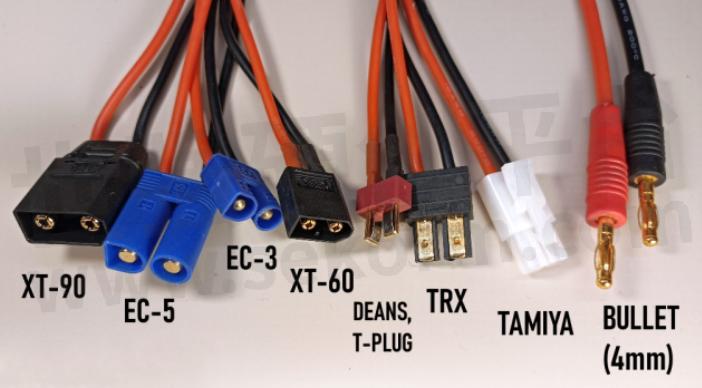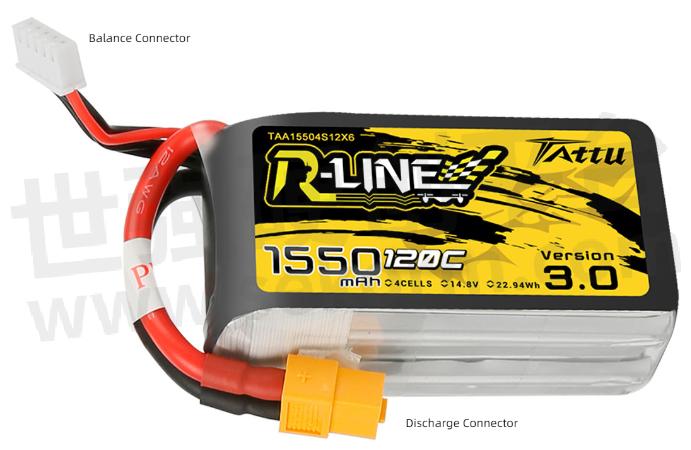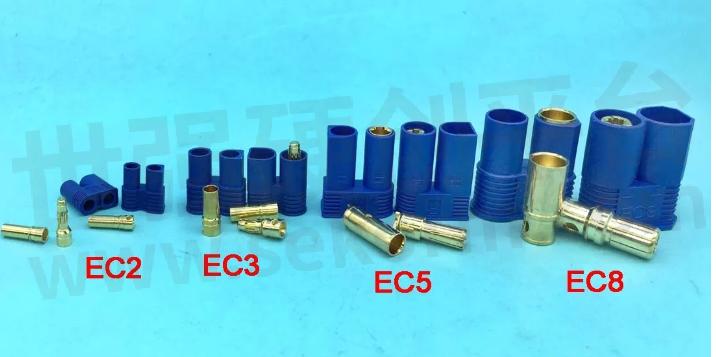Exploring LiPo Battery Connector Types

Lithium Polymer (LiPo) batteries have become the preferred power source for a wide range of electronic devices, particularly in the realm of radio-controlled (RC) hobbies. The versatility and high energy density of LiPo batteries make them ideal for applications ranging from RC cars and drones to portable electronic devices. One crucial aspect of using LiPo batteries is understanding the various connector types available. In this article, we'll delve into the different LiPo battery connector types, addressing key questions and providing insights into their applications.
LiPo Battery Connector Types Overview
LiPo batteries typically come equipped with a variety of connectors that facilitate the transfer of power between the battery and the device it powers. These connectors play a vital role in ensuring a secure and efficient electrical connection.The specific type of connector can vary based on the manufacturer and the intended use of the battery. Some common types of connectors found on LiPo batteries include:
◆Deans Connector (T-Plug): These are a popular choice for many RC enthusiasts. They offer a reliable and low-resistance connection, making them suitable for high-performance applications.
◆XT60 and XT90 Connectors: These connectors are widely used in the RC community. XT60 connectors are common for smaller applications, while XT90 connectors are designed to handle higher currents in more demanding setups.
◆EC5 and EC8 Connectors: EC5 connectors are suitable for applications with lower power requirements, while EC8 connectors are designed to handle higher currents. These are commonly used in RC vehicles.
◆Anderson Powerpole Connector: Often used in 12V applications, Anderson Powerpole connectors are known for their versatility and are widely used in various electronic devices and power distribution systems.
◆JST Connectors: These are smaller connectors commonly used in smaller-scale RC models and electronic devices. They come in various sizes, such as Micro JST and JST-PH, depending on the application.
◆PH 2.0 and Molex Picoblade Connectors: These connectors are often used for small LiPo batteries in micro RC models or compact electronic devices. They are lightweight and compact, suitable for space-constrained applications.

Fig.1
What are the two connectors on LiPo batteries?
LiPo batteries commonly feature two main connectors: the discharge connector and the balance connector. The discharge connector is responsible for delivering power to the device. This connector is designed to handle the current demands of the device, and the specific type of discharge connector can vary. Common discharge connectors include Deans (T-Plug), XT60, XT90, EC5, EC8, and others. The balance connector is a secondary connector that is used for balancing the individual cells within the LiPo battery. LiPo batteries consist of multiple cells connected in series, and it's crucial to ensure that each cell receives an equal charge and discharge to maximize the battery's lifespan and performance. The balance connector typically has multiple wires corresponding to each cell in the battery and is used during charging to monitor and balance the voltage across these cells.

Fig.2
What are the RC lipo battery connector types?
In addition to EC3, EC5, and EC8, other popular RC battery connectors include Deans, XT30, XT60, and XT90 connectors. Each type has its unique features, such as current-carrying capacity, size, and ease of use. Choosing the right connector depends on the specific requirements of the RC model and the power demands it entails.
What is the difference between EC3, EC5, and EC8 LiPo battery connectors?
EC3, EC5, and EC8 connectors are all part of the EC series of connectors designed by E-flite, and they are commonly used in the radio-controlled (RC) hobby industry. The main differences among them lie in their size and current-carrying capacity. EC3 connectors are typically designed for applications with lower power requirements, usually up to around 60-80 amps. EC3 connectors are commonly found in smaller to mid-sized RC models, such as airplanes and helicopters, where moderate power is sufficient. EC5 connectors are designed to handle higher currents, often used in applications with power demands ranging from 80 to 120 amps. EC5 connectors are popular in a variety of RC applications, including electric cars, boats, and larger aircraft, where higher power levels are required. EC8 connectors are built to handle higher currents, making them suitable for more demanding setups where currents can reach or exceed 150A. EC8 connectors are often used in larger and more powerful RC models, such as large-scale airplanes and high-performance electric vehicles.

Fig.3
What is the difference between JR and JST lipo battery connectors?
JR and JST connectors are commonly used in the RC hobby industry. The primary distinction is in their size and compatibility. JR connectors are larger and often used in larger RC models, while JST connectors are smaller and find applications in smaller-scale models and electronic devices. It's important to note that within the category of JST connectors, there are different subtypes such as JST-PH, JST-XH, etc., each with its own specifications and use cases. For example, JST-PH connectors are commonly used in small LiPo batteries for micro RC models.
What is the difference between XT30, XT60, and XT90 lipo battery connectors?
XT30, XT60, and XT90 connectors are commonly used in the radio-controlled (RC) hobby industry, and they differ primarily in their size and current-carrying capacity. XT30 connectors are designed for applications with lower power requirements, typically handling currents up to around 30 amps, which are commonly used in smaller RC models, and micro drones. XT60 connectors are designed to handle moderate currents, typically ranging from 30 to 60 amps, which are widely used in various RC models, including electric cars, airplanes, and drones. XT90 connectors are designed for high-current applications, with the ability to handle currents exceeding 90 amps, which are often used in larger and more powerful RC models, electric boats, and high-performance aircraft.

Fig.4
What are the differences in LiPo battery connectors for different voltages?
The differences in LiPo battery connectors for different voltages often lie in their design, current-carrying capacity, and application suitability. Here are some considerations for LiPo battery connectors at different voltages:
◆Low-Voltage LiPo Battery Connectors (e.g., 3.7V):
Connectors such as JST-PH, Molex Picoblade, Micro JST, and PH 2.0 are commonly used for low-voltage LiPo batteries. These connectors are suitable for micro RC models, small electronic devices, and applications where space is limited.
◆Mid-Range Voltage LiPo Battery Connectors (e.g., 7.4V - 11.1V):
Connectors like Deans, XT30, and XT60 are often used for mid-range voltage LiPo batteries. These connectors find applications in various RC models, including airplanes, cars, and drones, where moderate power levels are required.
◆High-Voltage LiPo Battery Connectors (e.g., 14.8V and above):
Connectors such as XT90, EC5, and EC8 are designed for high-voltage LiPo batteries. These connectors are used in larger and more powerful RC models, electric boats, and high-performance aircraft where higher voltage and current-carrying capacity are necessary.
Conclusion
Understanding LiPo battery connector types is essential for hobbyists, engineers, and anyone dealing with electronic devices powered by these versatile batteries. Whether you're working with large RC models, compact electronic gadgets, or 12V systems, choosing the right connector ensures optimal performance, safety, and longevity of your LiPo batteries. Consider the specific requirements of your application, and select the connector that best aligns with your needs. As a global leader in lithium battery cell manufacturing, Grepow offers professional customization solutions for RC battery and Battery Management Systems (BMS), catering to your specific application requirements.
- +1 Like
- Add to Favorites
Recommend
This document is provided by Sekorm Platform for VIP exclusive service. The copyright is owned by Sekorm. Without authorization, any medias, websites or individual are not allowed to reprint. When authorizing the reprint, the link of www.sekorm.com must be indicated.





























































































































































































































































































































































































































































































































































































































































































































































































































































































